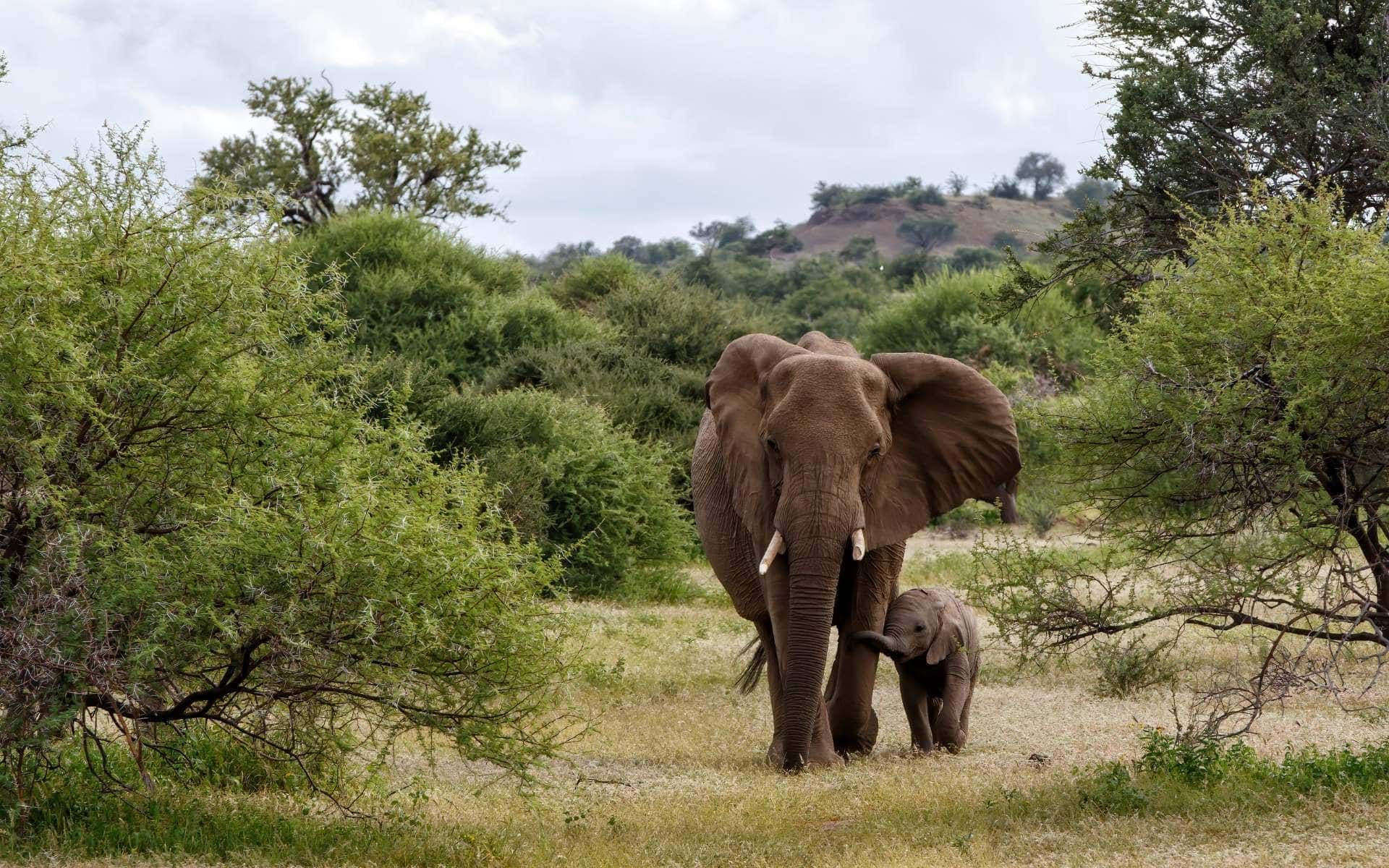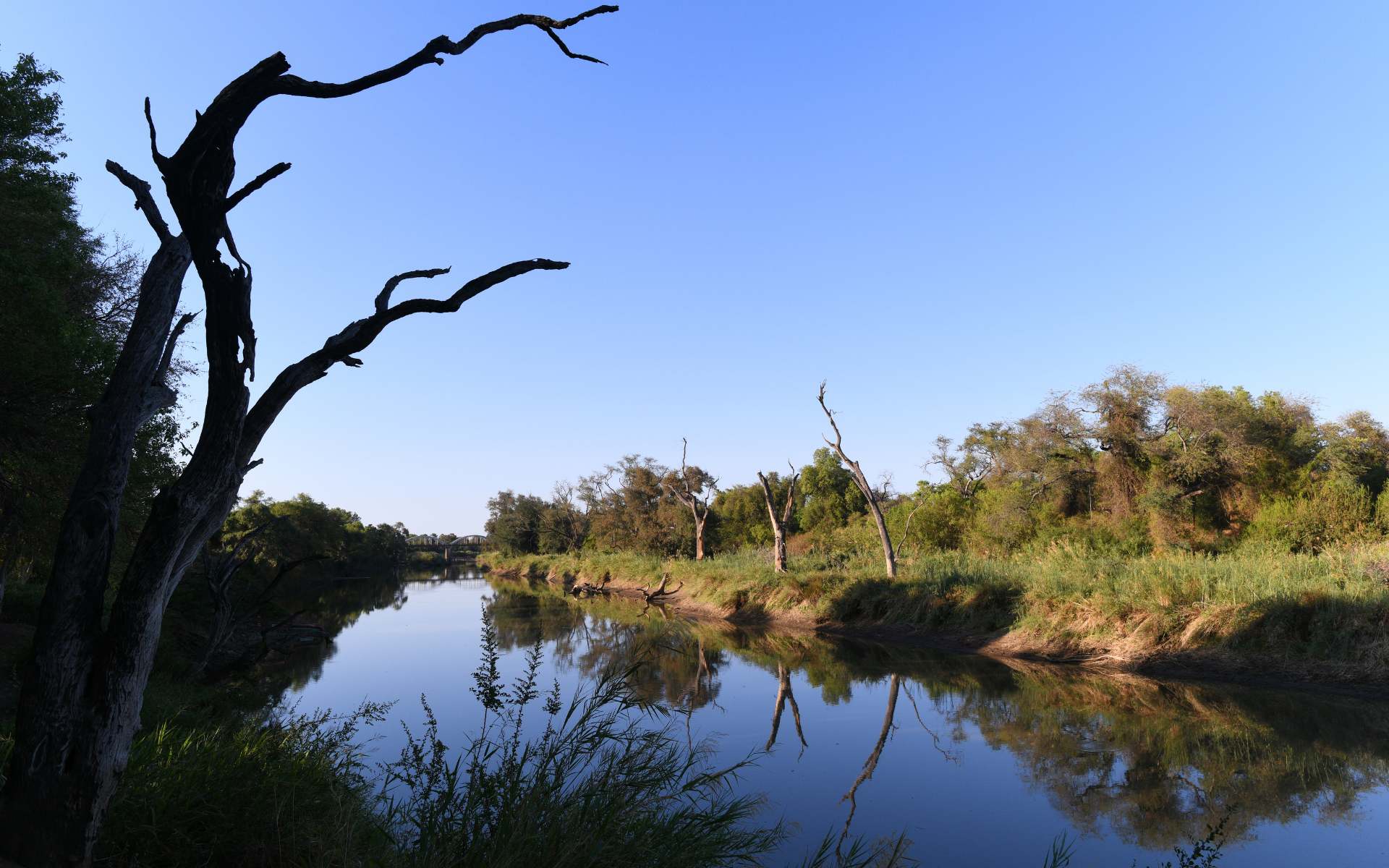A lesser-known wedge of wilderness in eastern Botswana, the Tuli Block is a region of rugged beauty, where dramatic sandstone formations, riverine forests, and open savannahs create a distinctive safari experience. Known as the “Land of Giants” for its ancient baobabs and large elephant herds, this area is home to many species of wildlife and offers a variety of thrilling safari activities.
Must-Visit Areas in the Tuli Block
The Tuli Block consists of several private reserves, each offering a unique safari experience. Here are our top picks:
Mashatu Game Reserve: Predator Encounters and Photographic Safaris

Mashatu Game Reserve is the largest and most well-known reserve in the Tuli Block, renowned for its high density of predators, including leopards, lions, and cheetahs. Large herds of elephants roam the reserve, while antelope species such as eland and kudu are frequently seen. The landscape of Mashatu, with its rocky outcrops and open plains, makes it ideal for both game drives and alternative safari experiences. Photographic hides allow visitors to observe and capture striking wildlife moments up close, and guided walks provide a deeper connection with the environment.
Northern Tuli Game Reserve: Untamed Wilderness and Unique Landscapes
The Northern Tuli Game Reserve encompasses several smaller reserves, including Mashatu. This vast, unspoiled wilderness is known for its dramatic scenery, featuring sandstone cliffs, ancient riverbeds, and massive baobab trees. The Limpopo River acts as a lifeline for wildlife, attracting a variety of species throughout the year. Walking safaris and horseback safaris offer an alternative way to explore this breathtaking region.
The Limpopo River: A Wildlife Magnet

The Limpopo River, which forms the natural border between Botswana and South Africa, plays a crucial role in sustaining the diverse ecosystems of the Tuli Block. The riverbanks attract large numbers of animals, particularly in the dry season, when water is scarce elsewhere. Hippos and crocodiles are common sights, while birdwatchers can spot rare species such as the Pel’s fishing-owl and the African fish eagle.
When’s the Best Time to Visit the Tuli Block?
The dry season, from May to October, is the best time to visit for wildlife viewing, as animals gather around the remaining water sources, making sightings more frequent. The green season, from November to April, transforms the landscape with lush vegetation, attracting migratory birds and creating stunning photographic conditions.
Animals Found in the Tuli Block
The region is home to a wide range of wildlife, including large herds of elephants, predators such as lions, leopards, and cheetahs, as well as antelope species like eland and kudu. The Limpopo River provides a year-round water source that attracts diverse species, while birdwatchers can spot over 350 recorded species, including the bateleur eagle and the elusive Pel’s fishing-owl.
How to Get to the Tuli Block
One of the key advantages of the Tuli Block is its accessibility. Unlike Botswana’s more remote reserves, it is easily reached from South Africa and Zimbabwe, making it a convenient option for multi-country safaris. You can charter flights directly from Johannesburg or Maun and land at airstrips within the reserves.